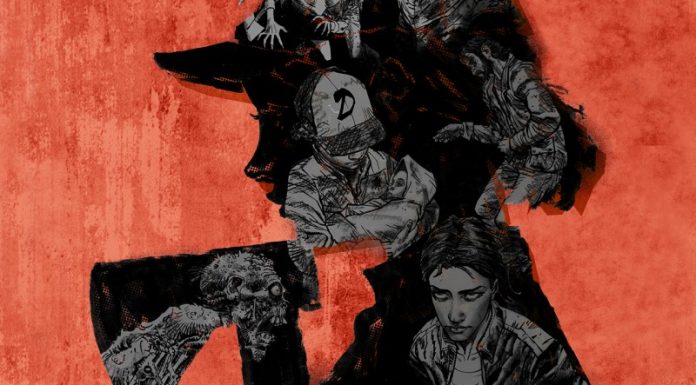I was optimistic that Firewall Ultra could be the long-awaited MacGuffin in the fancy new PS VR2’s come-up story. The original, Firewall: Zero Hour, entered the scene with bombast in 2018, making the most of far less impressive tech, so it makes sense that eye-tracking, Sense controllers, and foveated rendering might add new layers of depth to multiplayer VR shooting. But while Firewall Ultra does make great use of a few of the PS VR2’s features – especially the OLED display and 3D audio spatialization – it’s not nearly as revolutionary as I’d hoped. Thanks to molasses-thick progression that is punishing far more often than rewarding, clunky controls that feel straight-up unnatural thanks to an overreliance on eye-tracking, and an overall lack of content – Firewall Ultra is ultimately only a competent sequel at best.
Despite it being a competitive multiplayer first-person shooter like Firewall: Zero Hour, the first enemy I grappled with after booting up Firewall Ultra was its nauseating menu. This menu interface is based entirely on eye-tracking, with seemingly no way to turn that feature off in favor of much simpler pointing and clicking. I have a relatively strong stomach for VR, but this was unusually uncomfortable for me to navigate for the first couple of hours. This sucks because it’s here where basically everything important but the shooting happens, from setting up your character to joining a match.
At least Ultra’s confusing menu is not the very first thing you see. Instead, you’re shuffled through a comprehensive and helpful tutorial zone. It’s full of shooting ranges and drills that do a decent job of getting you used to the controls, but don’t be fooled: no matter how many times you run drills against its peculiarly-crafted dummies, there’s no Captain Price to ferry you to the next mission. When you’re ready to leave, you’ll want to open up your menu, select an option, and – what the heck is going on?
Firewall Ultra doesn’t do a ton of onboarding. This is partially because there’s no dedicated campaign; just a bunch of menus and a hub area that it plops you into between rounds. It’s serviceable, but surprisingly barebones. At least the main hub room where you queue up lets you change your loadouts at the weapon bench, set up your squad, or even jump into a different match through Firewall’s clunky in-game menu. But it’s not that approachable, and thanks to specific options being locked behind computers scattered around the hub area – including the weapon vendors that let you eventually purchase new weapons and gear as you unlock them – it’s far more confusing to get your bearings than it should be.
Contract Revoked
That said, there is some meat on Firewall Ultra’s multiplayer-centric bones. The Contracts mode returns as Ultra’s bread-and-butter game mode, as well as its only PvP option. It sets two teams of four players against one another in a game of cat and mouse, where one team defends an access point while the other team tries to get through those defenses. The spoils go to whoever wins two out of three rounds, and each team gets at least one chance to play as the attacker and the defender.
The Contracts mode is well-crafted, with each teammate able to customize their loadout with different skills, characters, guns, equipment, and so forth. Unfortunately, I stuck to the predetermined loadouts thanks to an arcane progression system that is downright sluggish, where rewards are gated both by a slow-earn currency and an experience bar that takes forever to move.
Ultra’s post-launch addition of assignments is promising, but in its current form, it’s basically just a tacked-on mission system where you get a bit of extra XP after earning a certain number of kills with specific weapons – once per day, at that. It’s still needlessly difficult to level up if you aren’t constantly getting five or six kills in a single match. In such a team-focused multiplayer shooter, it’s perplexing that Firewall Ultra went so far out of its way to keep me at lower levels, even when I spent most of a match reviving my downed teammates, spotting enemies on the security cameras, or using tactical gear like door blockers and flashbang grenades. Since most of the buyable weapons and items only open up at later levels, progression almost feels locked away for Firewall Ultra’s most elite players – or whoever is willing to pay for the privilege by speeding things up with real money microtransactions. Those haven’t been fully rolled out yet, aside from a few buyable characters – one of them already comes with a suspiciously overpowered perk – but it remains to be seen just how deep Ultra’s microtransactions will ultimately go.
At least this time around there’s also a PVE mode, Exfil, which sends four players to capture three different points on a map while waves of competently AI-controlled enemies spawn in from all sides. These matches don’t offer much of an XP or currency reward either, but they can be a great way to get used to Ultra’s controls and maps.
Silent Hall
Speaking of maps; my favorite part of Firewall Ultra is its small but diverse collection of eight different locations, each delicately crafted to feel dynamic. For instance, the Crossroads map sets the control point inside of a house that’s accessible from four or five different entrances, forcing the defending team to hunker down and take their chances on which areas to seal up and defend. Meanwhile, the attacking team needs to find creative ways to break the defending team’s guard. Playing defense required my team to work together to play a game of whack-a-mole against an opponent that was doing everything in its power to make us second-guess our positioning, whereas playing offense on the same map required the use of guerrilla tactics like making myself a decoy by providing cover fire from a remote location. At the same time, the rest of my team scurried between cover, resulting in one of the most intense VR shootouts I’ve experienced recently.
Each map is designed to force both teams to play in asymmetric ways, rewarding strategic interplay where teammates help one another adapt to enemy tactics through spoken communication over voice chat, rather than rewarding one squadmate jumping into the fray with a shotgun like Rambo. Doing that is usually an excellent way to lose a match early.
Maps like Social and Oyil Rig cleverly use darkness, which appears pitch black in the PS VR2’s OLED display and can be exploited by a skilled player to move across a room or corridor undetected. Likewise, most guns have flashlights that can counter a stealthy enemy player – and even blind them, unless they close their real-life eyes. But the coolest of Firewall Ultra’s additions is that dead teammates now take control of the map’s security cameras, giving them the ability to mark enemy players and call them out to surviving squadmates via comms. This mechanic keeps things fresh since communication is key to survival, and it’s exhilarating to outmaneuver and outstrategize the opposing team when everyone is working together.
G-OLED-eneye
These skirmishes are tense and tactical, making exceptional use of the PlayStation VR2’s OLED display, Pulse 3D audio, and controller haptics. Its somewhat janky character models are the weakest part of Ultra’s presentation, but its environments and weapons are intricately designed. Weapons feel satisfyingly hefty, providing a ton of force feedback in my Sense controllers as well as believable onscreen muzzle flashes and excellent sound design. On the same note, Firewall Ultra probably features the best use of 3D spatialization in any VR game I’ve played. Not only do my weapons sound lifelike, rooting me in Firewall’s world, but nearby footsteps and gunshots also sound like they’re positioned exactly where they look like they’re coming from. At one point, I thought one of my teammates closing a door I’d just walked through was someone coming into my actual room.
I’m less happy about Firewall Ultra’s control scheme, which feels like several steps backward. There’s no manual reloading, and instead of having weapons holstered on your avatar’s body, you now need to hold a button on your primary controller while you select the weapon you want with your eyes. Thanks to this system, switching weapons mid-combat isn’t just slow and unnatural – it’s also nauseating.
Firewall Ultra does make aiming slightly easier in two key ways, but even then, they’re both still experimental and clunky in practice. First, pressing L2 now toggles ADS, but it doesn’t really work in VR. Wherever my head is pointing, my gun simulates lining itself up as though I were looking down the sights, but it’s not exactly locked to a position that gives me the most control or even the most accuracy, with the gun jammed uncomfortably close to my face. Second, grenades rely entirely on eye-tracking, showing you your grenade’s trajectory before you lob it. This makes it easier to visualize where a grenade will land, but it’s a poor simulation of hand-eye coordination since you don’t actually throw grenades as you do in other VR shooters. You simply press a button and your avatar does it for you, which feels unnatural compared to other VR shooters.
























